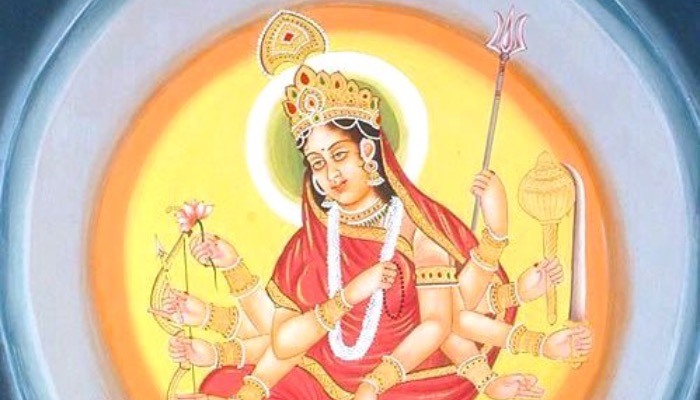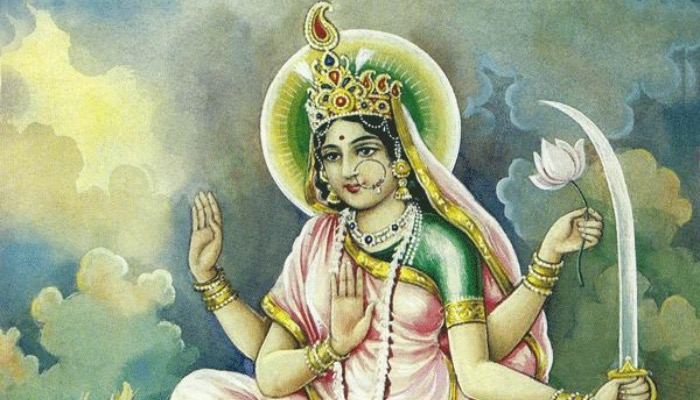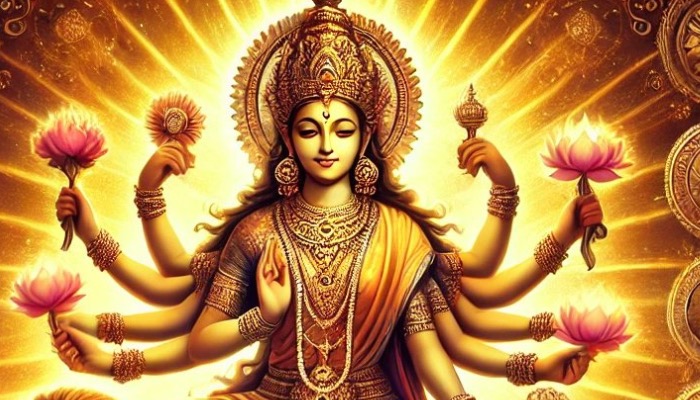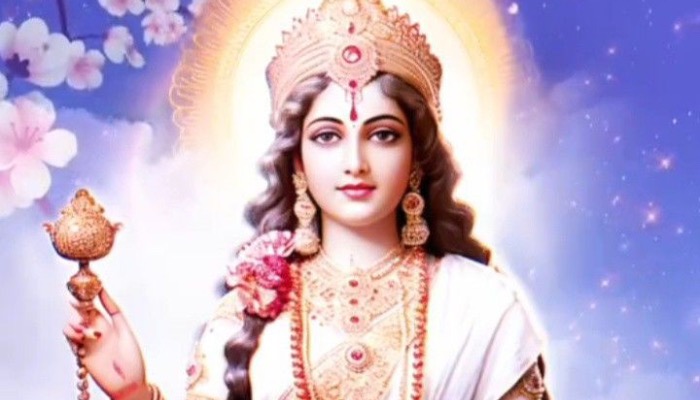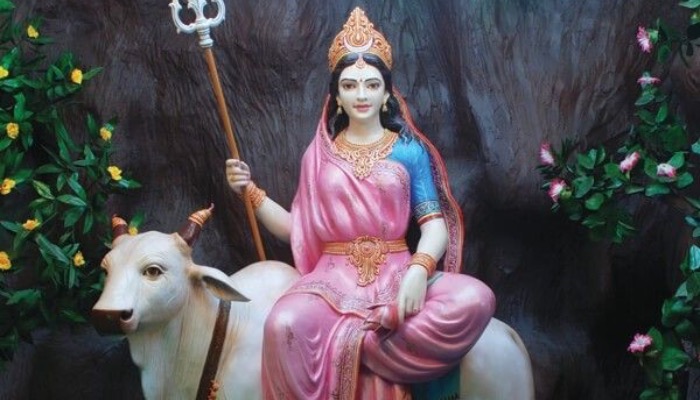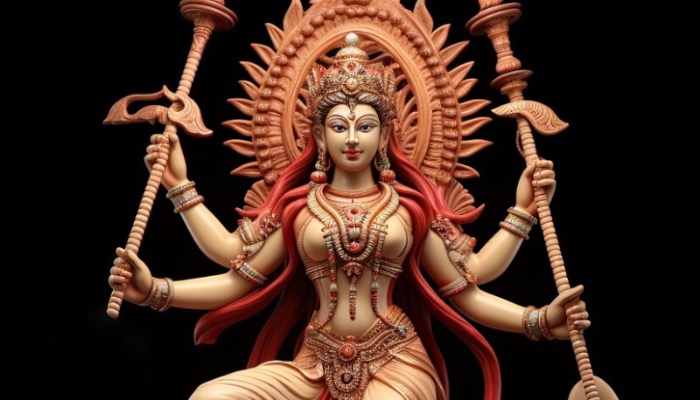Navratri Day 3: The name “Chandraghanta” comes from the crescent moon (Chandra) she wears on her forehead, which signifies peace and calmness. On the third day of Navratri, devotees worship Goddess Chandraghanta, one of the fierce forms of Goddess Durga. She represents power, strength, and the destruction of evil. The name “Chandraghanta” comes from the crescent moon (Chandra) she wears on her forehead, which signifies peace and calmness. Her appearance is one of majesty and grace, with a golden hue, three eyes, and ten hands, each holding a weapon to destroy negativity. She rides a lion, symbolizing both her strength and ability to conquer evil.
Goddess Chandraghanta
Goddess Chandraghanta is believed to protect her devotees from all types of fears and dangers. Her worship on the third day of Navratri holds special significance as she is seen as the symbol of bravery and courage, empowering individuals to face and overcome challenges in life. The crescent moon on her forehead signifies that even in the darkest times, she brings light and hope, helping to overcome obstacles and achieve peace of mind.
Significance
Devotees worship Goddess Chandraghanta to seek her blessings for strength, peace, and protection from any negative forces. Praying to her on the third day is believed to bring harmony, dispel fears, and help in overcoming internal conflicts. It is also said that she helps her followers gain the courage to face life’s trials and tribulations with a calm and composed mind.
In addition to offering prayers, fasting, and chanting mantras dedicated to Goddess Chandraghanta, devotees observe this day as a reminder to overcome fears, embrace peace, and invoke strength. This day marks the transition from the initial phase of struggle to the beginning of a victorious journey in the Navratri festival, as her divine blessings encourage strength and resilience in all aspects of life.

